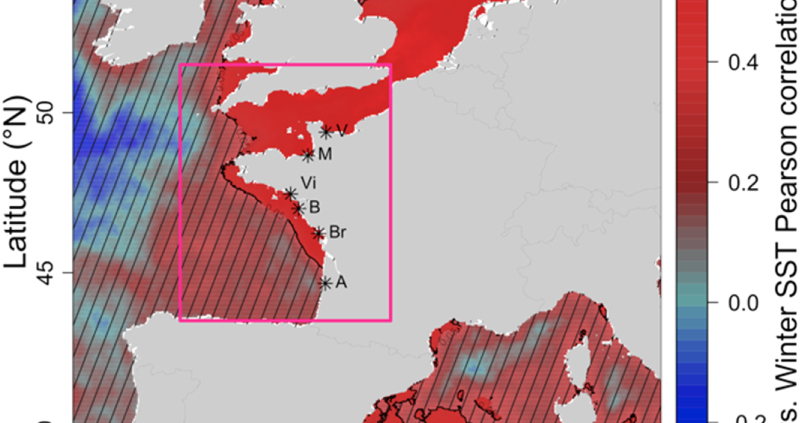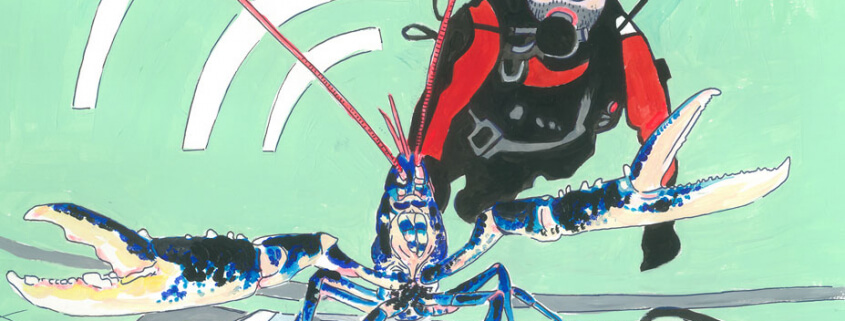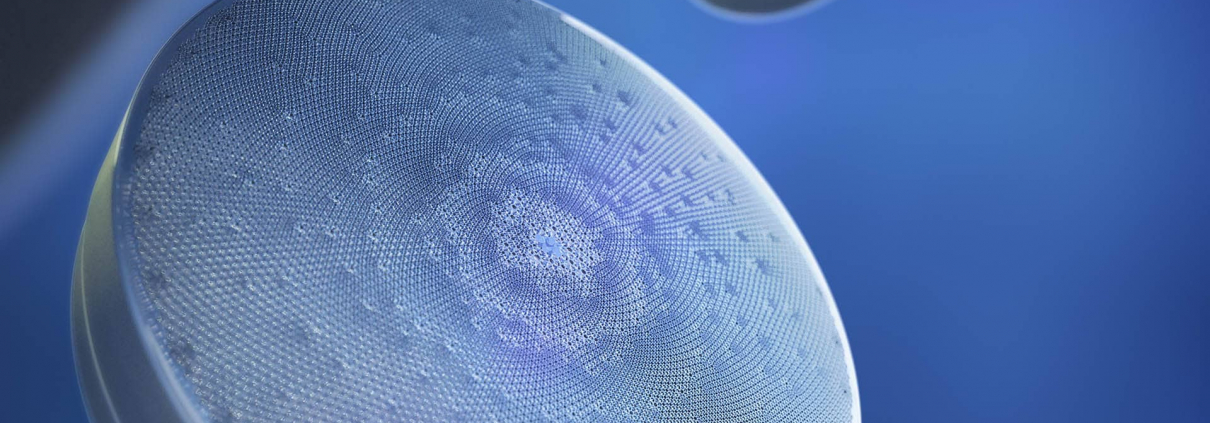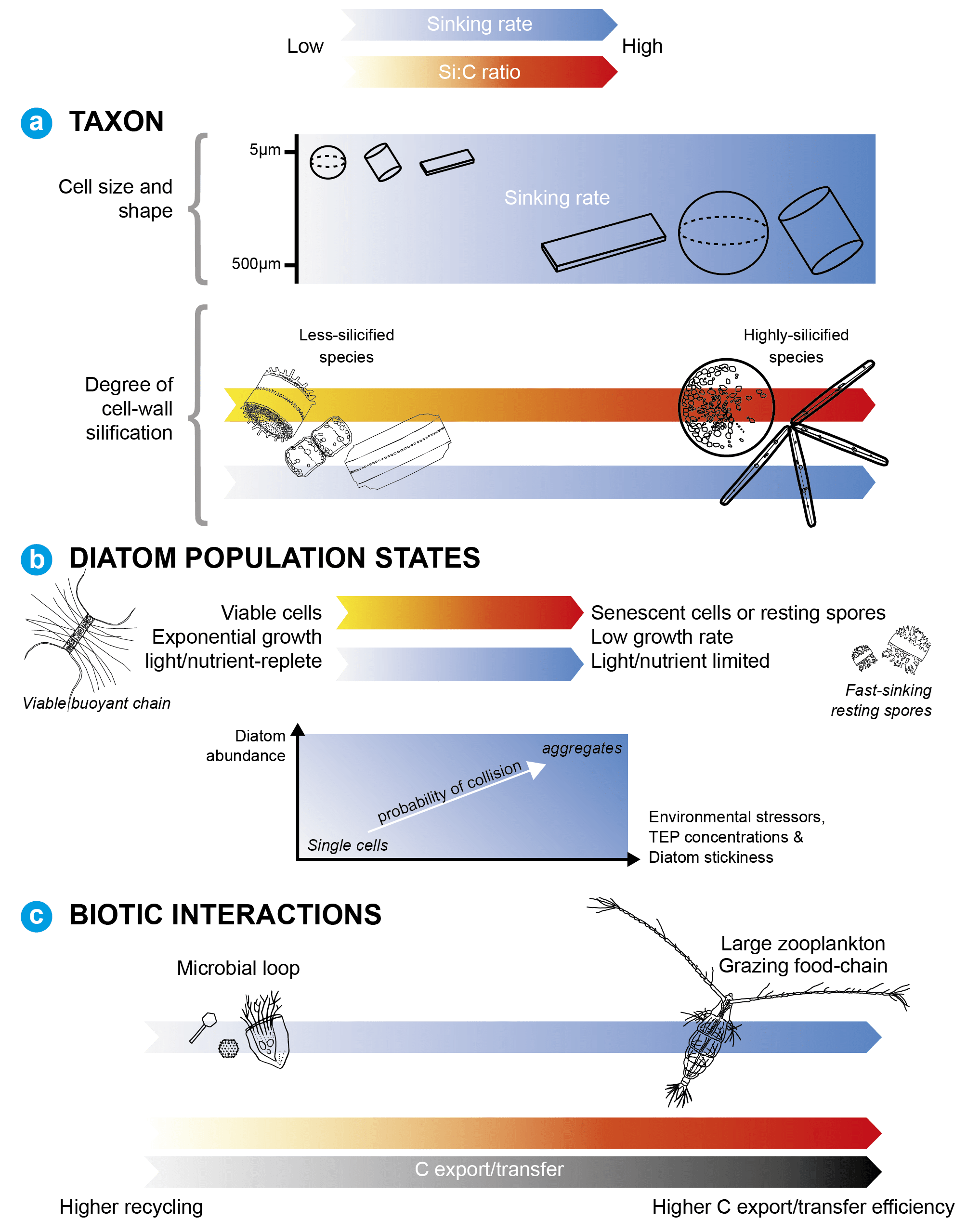Modeling reproductive traits of an invasive bivalve species under contrasting climate scenarios from 1960 to 2100
Mélaine Gourault, Sébastien Petton,Yoann Thomas, Laure Pecquerie, Gonçalo M. Marques, Christophe Cassou, Élodie Fleury,Yves-Marie Paulet et Stéphane Pouvreau
FAITS SAILLANTS
- Le modèle DEB disponible pour l’huître du Pacifique a été appliqué dans un nouvel environnement côtier : la baie de Brest (France).
- Cette version a été étalonnée avec succès à l’aide d’un nouvel ensemble de données couvrant 6 ans (de 2009 à 2014) de surveillance sur le terrain.
- Le modèle a prédit avec succès en détail les processus de reproduction complexes de C. gigas, en particulier son comportement de frai.
- Des simulations rétrospectives et prévisionnelles de la phénologie reproductive de C. gigas ont été effectuées à l’aide de scénarios du GIEC.
RÉSUMÉ
L’identification des facteurs qui contrôlent le succès de reproduction d’une population est essentielle pour prévoir les conséquences du changement climatique en termes de changement de distribution et de dynamique démographique. Dans la présente étude, nous avons cherché à mieux comprendre les conditions environnementales qui ont permis la colonisation de l’huître du Pacifique, Crassostrea gigas, dans la baie de Brest depuis son introduction dans les années 1960. Nous voulions également évaluer les conséquences potentielles du changement climatique futur sur son succès de reproduction et sur son expansion future.
Trois caractères reproductifs ont été définis pour étudier le succès de la reproduction : l’occurrence des pontes, la synchronicité entre individus et la fécondité individuelle. Nous avons simulé ces caractéristiques en appliquant une approche de modélisation individuelle à l’aide d’un modèle Dynamic Energy Budget (DEB). Tout d’abord, le modèle a été étalonné pour C. gigas dans la baie de Brest à l’aide d’un ensemble de données de surveillance sur 6 ans (2009-2014). Deuxièmement, nous avons reconstitué les conditions de température passées depuis 1960 afin d’exécuter le modèle à rebours (analyse rétrospective) et identifié l’émergence de conditions favorisant un succès croissant de la reproduction. Troisièmement, nous avons exploré les conséquences régionales de deux scénarios climatiques contrastés du GIEC (RCP2.6 et RCP8.5) sur le succès de reproduction de cette espèce dans la baie à l’horizon 2100 (analyse prévisionnelle). Dans les deux analyses, les variations des concentrations de phytoplancton étant alors inconnues dans le passé et imprévisibles dans l’avenir, nous avons fait l’hypothèse initiale que nos six années d’observation des concentrations de phytoplancton étaient suffisamment instructives pour représenter les « possibilités passées et futures » de la dynamique du phytoplancton dans la Baie de Brest. Par conséquent, la température est la variable que nous avons modifiée sous chaque cycle de prévision et de prévision a posteriori.
Les simulations rétrospectives ont montré que les épisodes de frai ont augmenté après 1995, ce qui concorde avec les observations faites sur la colonisation par C. gigas. Les simulations de prévision ont montré que dans le scénario le plus chaud (RCP8.5), le succès de reproduction serait amélioré par deux mécanismes complémentaires : une fraie plus régulière chaque année et une fraie potentiellement précoce, ce qui donnerait une phase larvaire synchronisée avec la période estivale la plus favorable. Nos résultats ont démontré que les dates de frai et la synchronicité entre les individus dépendaient principalement de la dynamique saisonnière du phytoplancton, et non de la température comme prévu. Des recherches futures axées sur la dynamique du phytoplancton dans différents scénarios de changement climatique amélioreraient grandement notre capacité à prévoir le succès de reproduction et la dynamique des populations de cette espèce et d’autres invertébrés semblables.
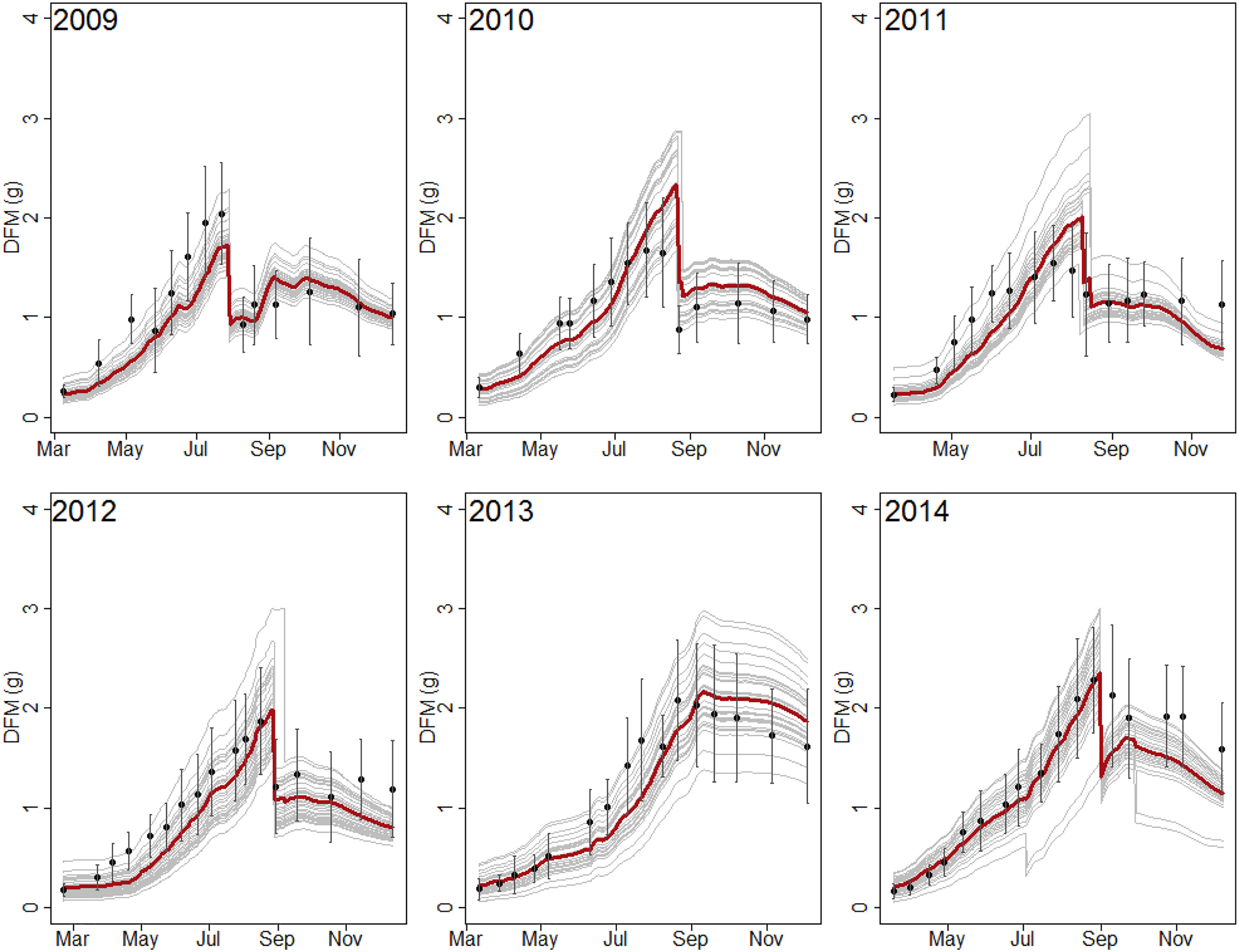
Figure 4 : Simulations de croissance et de frai d’huîtres obtenues par le modèle DEB par rapport aux données observées de 2009 à 2014 (DFM = Dry Flesh Mass). Le DFM observé est représenté par des points noirs avec des barres d’écart-type (n = 30). Les lignes grises représentent les trajectoires de croissance individuelles simulées par le modèle. La ligne rouge foncé en gras représente la moyenne des 30 trajectoires.
RÉFÉRENCE
Modélisation des caractéristiques de reproduction d’une espèce bivalve envahissante dans des scénarios climatiques contrastés de 1960 à 2100

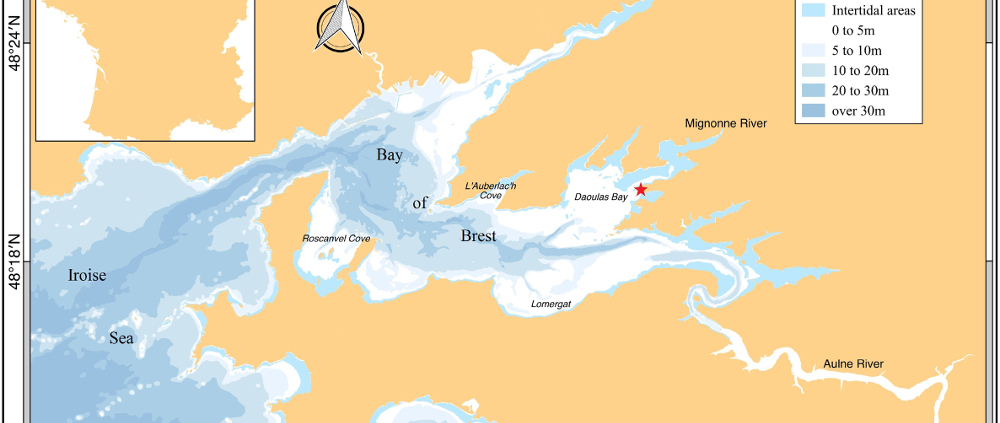 J. Sea Res.
J. Sea Res.